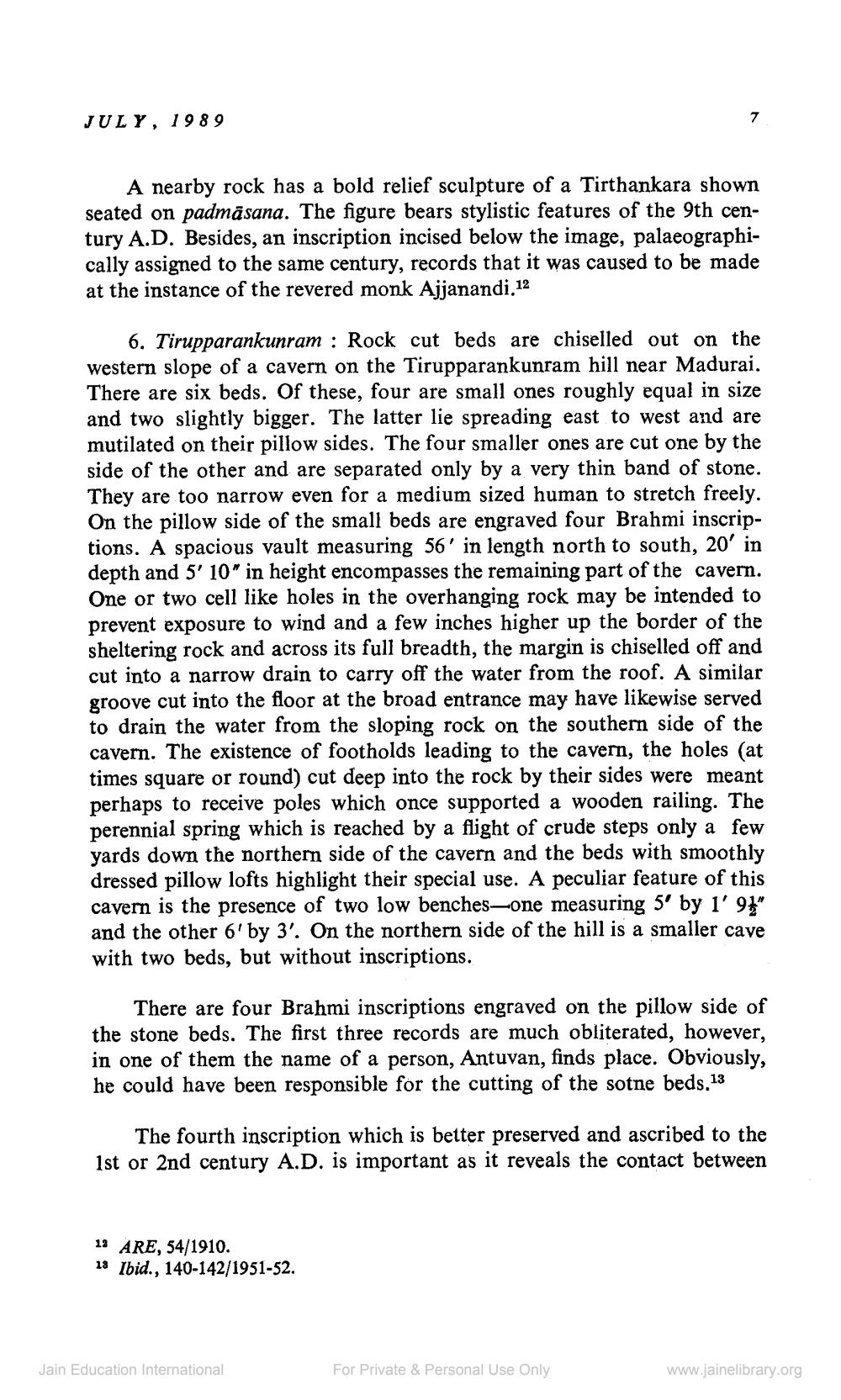Book Title: Jain Journal 1989 07 Author(s): Jain Bhawan Publication Publisher: Jain Bhawan Publication View full book textPage 8
________________ JULY, 1989 A nearby rock has a bold relief sculpture of a Tirthankara shown seated on padmāsana. The figure bears stylistic features of the 9th century A.D. Besides, an inscription incised below the image, palaeographically assigned to the same century, records that it was caused to be made at the instance of the revered monk Ajjanandi.12 6. Tirupparankunram : Rock cut beds are chiselled out on the western slope of a cavern on the Tirupparankunram hill near Madurai. There are six beds. Of these, four are small ones roughly equal in size and two slightly bigger. The latter lie spreading east to west and are mutilated on their pillow sides. The four smaller ones are cut one by the side of the other and are separated only by a very thin band of stone. They are too narrow even for a medium sized human to stretch freely. On the pillow side of the small beds are engraved four Brahmi inscriptions. A spacious vault measuring 56' in length north to south, 20' in depth and 5' 10" in height encompasses the remaining part of the cavern. One or two cell like holes in the overhanging rock may be intended to prevent exposure to wind and a few inches higher up the border of the sheltering rock and across its full breadth, the margin is chiselled off and cut into a narrow drain to carry off the water from the roof. A similar groove cut into the floor at the broad entrance may have likewise served to drain the water from the sloping rock on the southern side of the cavern. The existence of footholds leading to the cavern, the holes (at times square or round) cut deep into the rock by their sides were meant perhaps to receive poles which once supported a wooden railing. The perennial spring which is reached by a flight of crude steps only a few yards down the northern side of the cavern and the beds with smoothly dressed pillow lofts highlight their special use. A peculiar feature of this cavern is the presence of two low benches—one measuring 5' by 1' 94" and the other 6' by 3'. On the northern side of the hill is a smaller cave with two beds, but without inscriptions. There are four Brahmi inscriptions engraved on the pillow side of the stone beds. The first three records are much obliterated, however, in one of them the name of a person, Antuvan, finds place. Obviously, he could have been responsible for the cutting of the sotne beds. 13 The fourth inscription which is better preserved and ascribed to the 1st or 2nd century A.D. is important as it reveals the contact between 13 ARE, 54/1910. 18 Ibid., 140-142/1951-52. Jain Education International For Private & Personal Use Only www.jainelibrary.orgPage Navigation
1 ... 6 7 8 9 10 11 12 13 14 15 16 17 18 19 20 21 22 23 24 25 26 27 28 29 30 31 32 33 34 35 36 37 38 39 40
